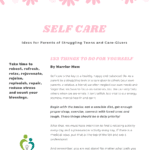There’s something revolutionary about stay-at-home parents building a thriving business in the gaps between school pickups, lunch prep, and nap times. It’s not just about income—it’s about autonomy, creativity, and making space for personal ambition within the chaos of home life.
Too often, the conversation around home-based work loops back to online shops and e-commerce, as if the only way to work from your kitchen table is to become a product-pusher. But there’s a deeper, richer world of small business ideas—offline services, skill-based hustles, community-oriented work—that sidestep the warehouse-in-your-garage model entirely.
For parents who want to blend entrepreneurship with presence, there’s no shortage of meaningful, profitable paths.
Home-Based Freelance Consulting: Let Your Past Life Fuel Your Future
You might have spent a decade building skills in marketing, education, HR, or finance before switching gears to raise a family. What you know is valuable, and it can become a consulting business that you run entirely from your home.
Offering services like resume building, grant writing, curriculum planning, or even small business HR consulting gives you the freedom to take on clients as your schedule allows. You don’t need a storefront, inventory, or a massive startup budget—you just need to package what you already know in a way that serves someone else’s needs. And for clients who prefer Zoom over in-person meetings, your living room becomes your conference room.
In-Home Childcare: Turn the Chaos Into a Community Service
If your days are already centered around childcare, it might make sense to fold a few more kids into the mix—especially if your area has long waitlists for daycare or preschools. Starting an in-home childcare service can be both fulfilling and sustainable.
You’ll need to navigate your state’s licensing requirements and possibly make a few home modifications, but you’ll be providing something your community desperately needs. The added bonus? Your own kids get built-in socialization, and you earn income without ever leaving the house.
Local Tutoring or Educational Coaching: Share What You Know
If you’ve got a knack for breaking down complex subjects or if you were once a teacher or academic, tutoring might be your sweet spot. Parents are always on the lookout for support with reading comprehension, math confidence, or standardized test prep, and most prefer someone local they can trust. You can conduct sessions in your home, meet at a local library, or offer virtual options for flexibility. This kind of business thrives on word-of-mouth and trust—two things that parent communities are very good at generating.
Meal Planning and Personal Chef Services: Cook With Purpose
Some people see a messy garage and cringe—others see a goldmine. If you’ve got a talent for creating order, decluttering spaces, or helping people create more functional home workflows, you could build a business organizing other people’s chaos.
Think closet makeovers, paper decluttering, kitchen resets, or digital file organization. You’ll be solving problems for other overwhelmed parents, and you don’t need to sell a single product to do it. Just a clear eye, a good strategy, and the patience to help others get unstuck.
Pet Services from Home: Dog Sitting, Walking, and More
You love animals, and your home is pet-friendly—why not open your doors to furry clients? Dog boarding, pet daycare, or even in-home grooming for neighborhood clients can be a cozy and low-cost business.
Licensing and liability insurance are necessary steps, but beyond that, this is a business built on relationships and reputation. Many pet owners are looking for someone more personal than a kennel or large chain, and a parent who’s home all day is uniquely positioned to meet that need.
Protect Yourself
Before your first invoice goes out or your website goes live, you’ll want to decide on a business structure—and that decision matters more than it seems. If you’re running a solo operation out of your home, forming an LLC with ZenBusiness can be a smart move, offering limited liability that protects your personal assets in case something goes sideways.
You also get potential tax perks, less bureaucratic weight than a full-blown corporation, and the flexibility to scale without jumping through hoops. You don’t need to shell out thousands to a lawyer, either; you can file on your own or use a trusted formation service. Just make sure to review your state’s specific rules—some require annual reports or publication notices, and those details can sneak up on you if you’re not watching.
This isn’t about hustling 24/7 or turning motherhood into another job. It’s about finding work that fits into your life—not the other way around. These business ideas don’t rely on product drops, inventory management, or scaling an online empire.
They rely on your brain, your hands, your heart, and the community around you. If you build something that energizes you, reflects your skills, and aligns with your family life, you’re not just running a business. You’re building your own version of freedom.
Discover the journey of resilience and transformation at My Warrior Mom Life, where real stories of overcoming technology-induced family crises inspire and empower.


















